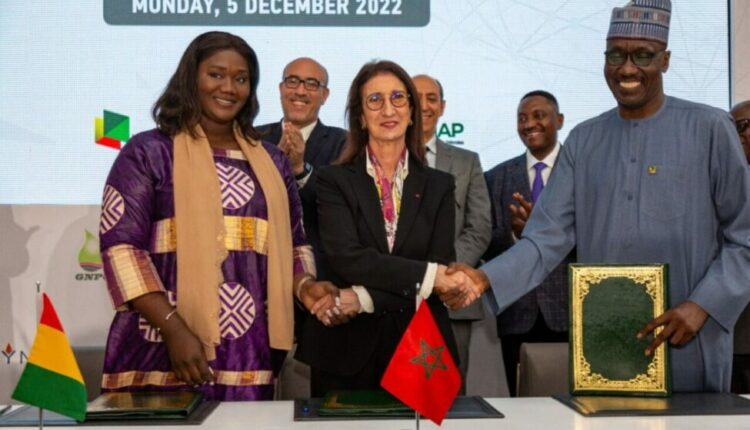Nigeria-Morocco Pipeline Project: Five MoUs are Signed
The Nigeria-Morocco Gas Pipeline project saw the signing of five tripartite Memoranda of Understanding (MoU) on Monday in Rabat.
Morocco, Nigeria, Gambia, Guinea Bissau, Guinea, Sierra Leone, and Ghana all signed these Memoranda of Understanding in turn and in succession.
The National Nigerian Petroleum Company Limited (NNPC) and the Moroccan National Office of Hydrocarbons and Mines (ONHYM) signed the first Memorandum of Understanding with the Gambia National Petroleum Corporation (GNPC-Gambia).
The National Nigerian Petroleum Company Limited “NNPC” and ONHYM signed the second memorandum with PETROGUIN-Guinea Bissau, while the National Nigerian Petroleum Company Limited “NNPC” and Société Nationale des Petroleos “SONAP” of the Republic of Guinea signed the third agreement.
With the Petroleum Directorate of Sierra Leone (“PDSL”), ONHYM and the National Nigerian Petroleum Company Limited (“NNPC”) signed the fourth Memorandum. With the Ghana National Gas Company (“GNGC”), ONHYM and the National Nigerian Petroleum Company (“NNPC”) signed the fifth Memorandum.
According to a joint statement from the signing parties, these MoUs, along with those signed with ECOWAS on September 15, 2022, and those with Mauritania and Senegal on October 15, 2022, confirm the parties’ dedication to this strategic project, which, once finished, will supply gas to all West African countries and will also open a new export route to Europe.
The same source continued, pointing out that the project will also enable Africa to take on a new economic, political, and strategic dimension. This infrastructure will improve the living conditions of the population, the integration of the sub-economies, region’s and the mitigation of desertification through a sustainable and reliable gas supply that respects the continent’s commitments to environmental protection.
From Nigeria, the pipeline will travel via Benin, Togo, Ghana, Ivory Coast, Liberia, Sierra Leone, Guinea, Guinea Bissau, The Gambia, Senegal, and Mauritania before ending in Morocco. It will be linked to both the European gas network and the Maghreb-Europe gas pipeline. The infrastructure will also feed Niger, Burkina Faso, and Mali, three landlocked nations.


